Little World Libraries to Boost World Literacy on Campus
By Jean Janecki, Mount Holyoke College

DOI: https://www.doi.org/10.69732/JRPB3091
When your college is located in a smaller rural community, students’ contact and interaction with native speakers of foreign languages and different cultures can be limited. Like most language center directors, I am always looking for ways to provide opportunities for our students (and the greater campus community) to explore new cultures in diverse ways. At the same time, I also strive to keep our international students engaged. So, what better way to learn about different cultures and share one’s own culture than through a book exchange?
The average reader of The FLTMAG will undoubtedly expect an article that includes aspects of technology related to the learning and teaching of languages. Although we did use some incredible power saws and woodcutters for our project, this article focuses on one of the other significant aspects of IALLT: the people. People who love to learn, teach, and share languages. Whether we do that in our classrooms, language centers, or communities, that is what we are about. That is our essence. I will explore the human side and how my little idea brought people from different parts of our campus together, resulting in a fantastic experience of sharing languages and cultures with a larger community.
I’m sure many of you have seen the little free library boxes around your neighborhood or maybe even host one yourself. The Little Free Library (LFL) is a nonprofit organization that Tod Bol began in Hudson, Wisconsin, in 2009. Their headquarters are now in St. Paul, MN, and according to the LFL website, more than 400 million books have been shared worldwide since their beginning. And those are just the boxes that are registered with the organization (which includes ours). My inspiration began as I was walking the dog one day and decided to investigate a little free library box I had seen several times. Little did I know where that would lead me. First, I had not seen the rained-out sign announcing there was a wasp nest inside this particular little box, and I probably should not have opened it. Imagine the scene. It was not pretty! Thankfully, I did not get stung, but it truly impressed me. One of my first thoughts was that if I ever created one of these boxes, I would ensure the wasps could not get in. I had never considered making or hosting a little library box before that. So, as my thoughts progressed, I went from…maybe I should put one in front of our house, to maybe one in the dominantly Hispanic neighborhood with books in Spanish and English, to what about all over campus in 10 different languages! Ok, maybe that last one was a little ambitious, but then again…Go big or go home, right?
When I initially thought of the idea, I imagined I was not the first one in this country to do so. I did a Google search and found a few universities with free library boxes on their campuses, but none in different world languages. According to the Little Free Library Association, Mount Holyoke is the only college that has installed boxes with foreign languages, at least that has been registered with them. So now, I had to make this happen. But how? It was only possible with a supportive administration, my incredible student workers, and other cooperative parties on campus. Hopefully, the following explanation of our brainstorming, planning, design, creation, and installation of our Little World Libraries (as we call them) will inspire you to do a similar project on your campus.
In the fall semester of 2021, as we were returning in person, everyone seemed so excited that any idea I presented to my administration and staff to do a community project probably would have been welcomed. Since many of my staff and our students on campus are international, I thought this project would be an excellent way for them to share their language and cultures and have a way to get free books. My students were involved in the brainstorming and planning from day one. It was not something I could do alone, and when I asked my 12 student workers what they thought, they loved the idea and wanted to build the boxes themselves. I initially thought of purchasing the boxes but was open to suggestions. Creating the boxes ourselves was a great idea since we have a fabulous Maker space (the Fimbel lab) on campus. Collaborating with them would cut costs instead of purchasing already-made libraries. I invited a Fimbel Lab representative to one of our first staff meetings to get a feel of what we wanted and discuss ideas on how we could make it happen and if it was even feasible. The answer was yes, let’s do it.
The first real step was to see how to construct these boxes and what type did we think best. I found a few box designs from the LFL association (available for free) and other sources, presented those to the director of the Maker space, Kris Camp, and between all of us, we voted and chose one. Kris was confident that our boxes would work just fine, with a few minor structural changes to the roof and pedestal. Just like that, we had our box design and a pattern to follow. I can’t say enough how crucial Kris was in the success of this project. He broke it down to the exact materials we needed and made magic with the design and building plans. But of course, we still needed to fund this project for it to happen. Thankfully, my director was able to provide sufficient funds for the building materials. We had enough for 6 boxes. That was great, but was it OK with facilities and our grounds maintenance folks for us to install these boxes on campus, and who actually would do that? And where exactly on campus would/could they go? These minor details needed to be approved before we could actually start building—no sense in making these boxes if the college wouldn’t let us put them up.
In October 2021, after a few messages, meetings, and walks around campus with the Head of Facilities, he gave us the go-ahead, and then the fun began!
At this point, we had:
- an agreed-upon the Modern-two-story design for the construction of the boxes
- a fixed number of boxes we could build
- an agreement with the Maker space (Fimbel lab) that they would purchase the materials
- money to pay for the materials!
- an agreement that Facilities would install the poles and boxes upon completion
- tentative areas for installation
By November, we had a firmer plan. Kris and I asked the LCC staff to work in one (or more) of three groups: design, building, and decorating. Almost 75% of the staff participated in some form. The idea was for us to meet bi-weekly or as much as possible, or as needed, starting with the design process for the rest of the fall semester, and the actual construction and decorating would take place and be finished by the end of spring. Again, we were a little ambitious but motivated and excited about making our little world libraries.
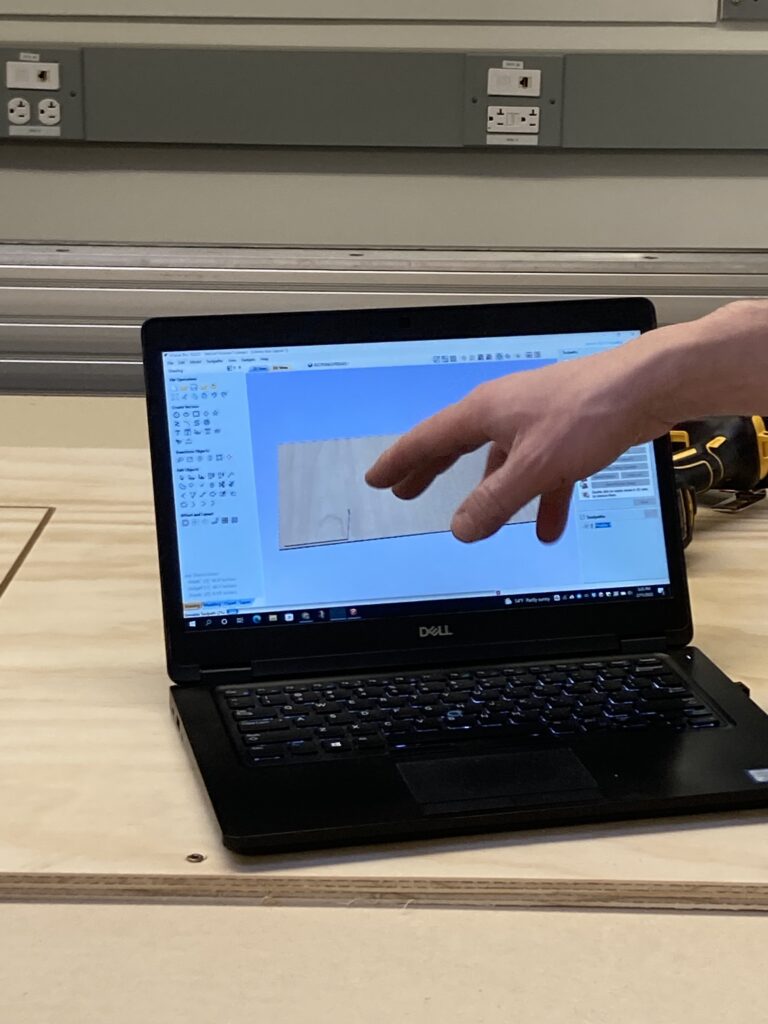
The plan’s first phase was design. Even before that could begin, we needed to make a final decision on the language or languages for each box as well as which language or languages would go where. Although I had my original ideas of the languages I hoped to showcase and the tentative areas on campus, I wanted to give my student staff a chance to voice their opinion. As genuine Mount Holyoke College students, they all had strong opinions and knew how to advocate for their ideas. We eventually agreed on 10 languages based on those we currently teach at MHC and from those our faculty and students most widely speak. The more popular languages would have their own boxes, while the others would share a space. We also compromised on the locations of the boxes according to where students thought a particular language might be more popular. For example, the Spanish box is located by the Ciruti Center, where most language classes are held, with Spanish having the largest population. The Multi-faith center has a beautiful Japanese garden, thus a perfect location for our Japanese box. Our “classic” languages of Italian and French deemed appropriate for the main entrance of the library. Phew! Those were huge and essential decisions. Of course, not everyone was totally content, but we came to a good compromise.
We had to decide what the boxes would look like and considered the following questions.
- How do you display the language/s the box will hold: in English or its language? Or both?
- What type of decorations would go on the boxes? Books? Flowers? Henna designs? A saying? All of the above?
- Do we add Mount Holyoke and/or LCC logos? Or both? And how?
- What material would these designs be made of? Who could make them? What side/s do they go on?
Some very talented and motivated students worked with Kris and me to develop possible designs, and again, I asked for staff feedback. The creativity exploded as students submitted their well-developed ideas and sketches. A wonderful, unexpected benefit of the project was how my staff documented the whole process from the beginning. Students used their technical and artistic skills to record the journey through videos and photographs, posting regularly on social media as the project progressed. Upon completion, one student worker created a short video narrative and others a poster with a timeline capturing the important steps and moments, now proudly displayed in the LCC. The history and magic of the process will not be forgotten.
When the spring 2022 semester started, we were ready to really roll and move on to Phase 2. I had hired extra students so that those who were interested in working on the project could do so, and it would not affect the scheduling of hours in the LCC.
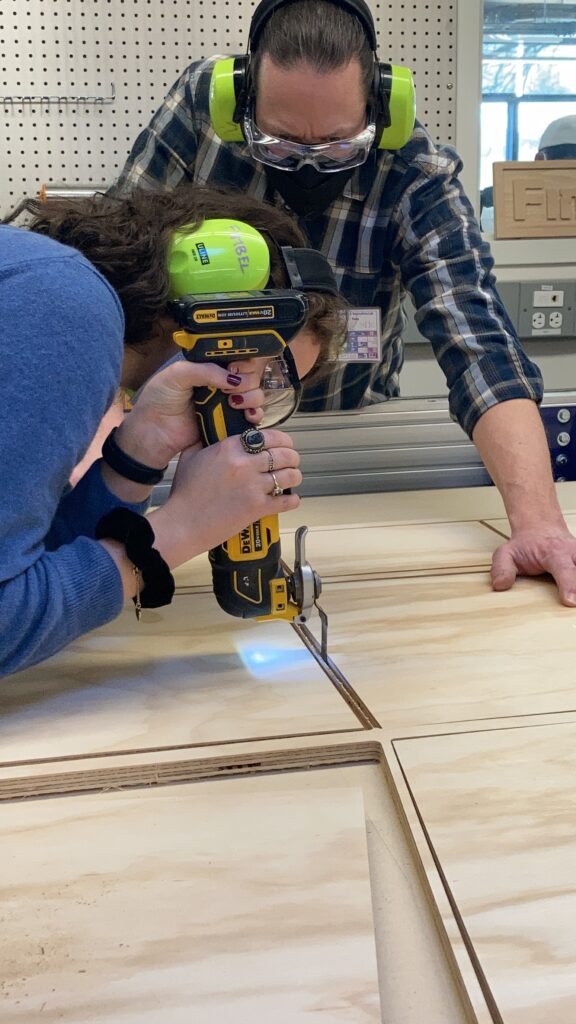
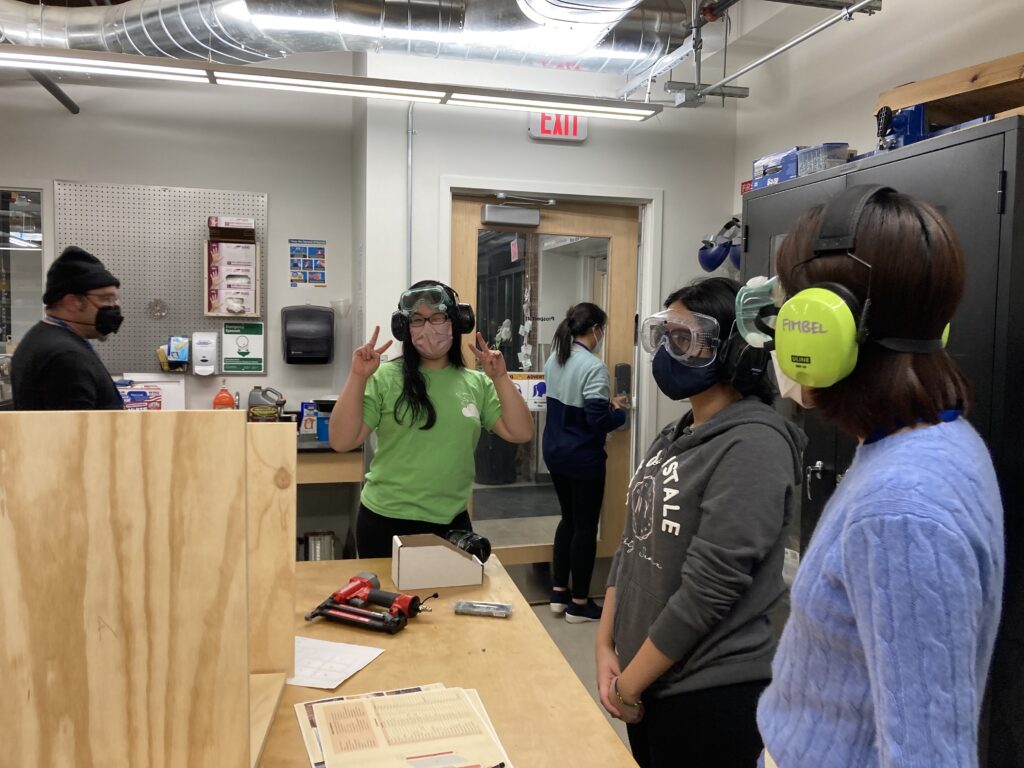
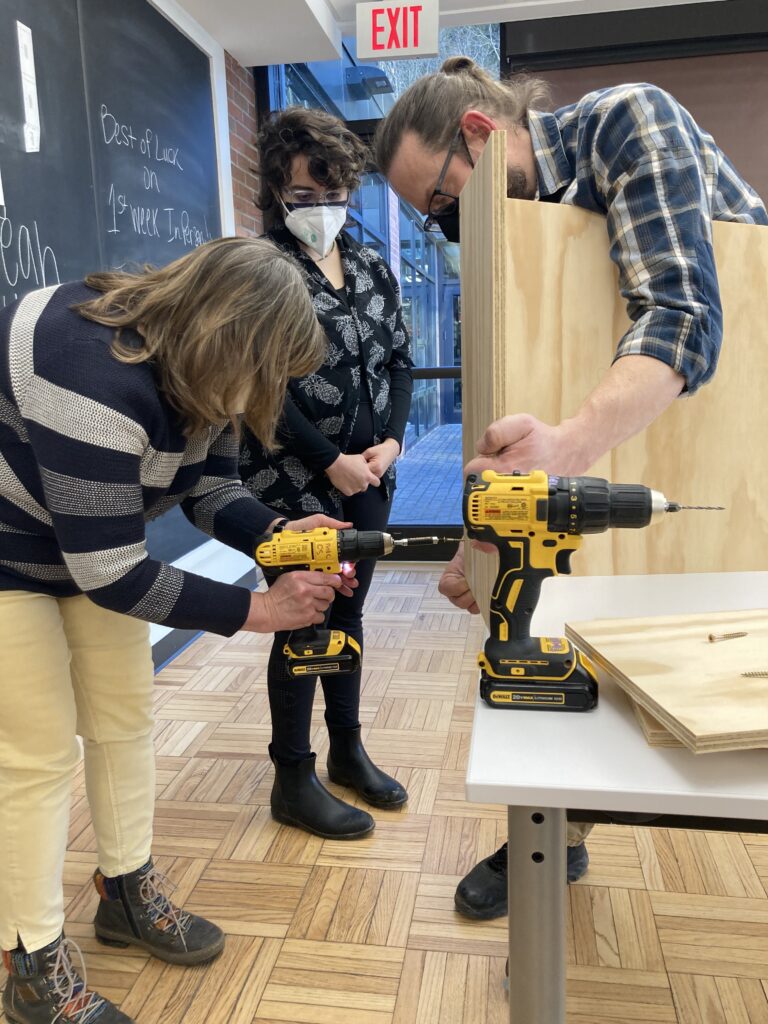
With the design chosen, it was time to follow the plans and get to work. Many different parts had to be created, cut out, and put together. About 6 students, myself, and Fimbel staff spent most of the spring semester cutting, building, and painting. We had set aside Wednesday evenings, and those who could attend came then; others came when they had free time. We made one complete box and then learned to make slight changes from that model. It was quite the process, taking people out of their comfort zones, but very fun at the same time. I bought pizza a few of the nights, which everyone much appreciated. These work sessions provided excellent bonding time for the staff, who contributed so much to this essential phase. One of my student workers, a double major in philosophy and politics and a native Mandarin speaker from Beijing, China, commented in an article that the college published, “I appreciate the opportunity the LCC has given me to work in the Fimbel Lab. I love the Maker space, but as a humanities/social science major, it is not my usual setting…with the help of others who work there, I helped build the library boxes from scratch. I used the laser cutter to make doors for the libraries and helped with printing the patterns onto the boxes.” Her experience and that of other staff members made the project a memorable part of their college careers.
Once the boxes were built, we still had some decisions to make as far as the design was concerned. As mentioned, students had come up with possible decorations, and we decided to translate the Free Little Library Slogan of “Take a book, share a book” into the 10 different languages to be featured on the door of each box. Some would have two languages, and some would have one. It was very important that translations were correct, so I sent them to native-speaking faculty for approval and suggestions. Here is the translation document that we used – feel free to use it if you want to undertake a similar project.
Specifications needed to be determined on the materials that could be used in order to transfer the designs and wording best. Naturally, the position, size, color, and other factors needed to be considered. We really hoped to have the boxes finished by the end of the spring semester, but there were some details that we just didn’t have time for. My staff and the Fimbel staff worked very hard. But, alas, the students had to leave for the summer.
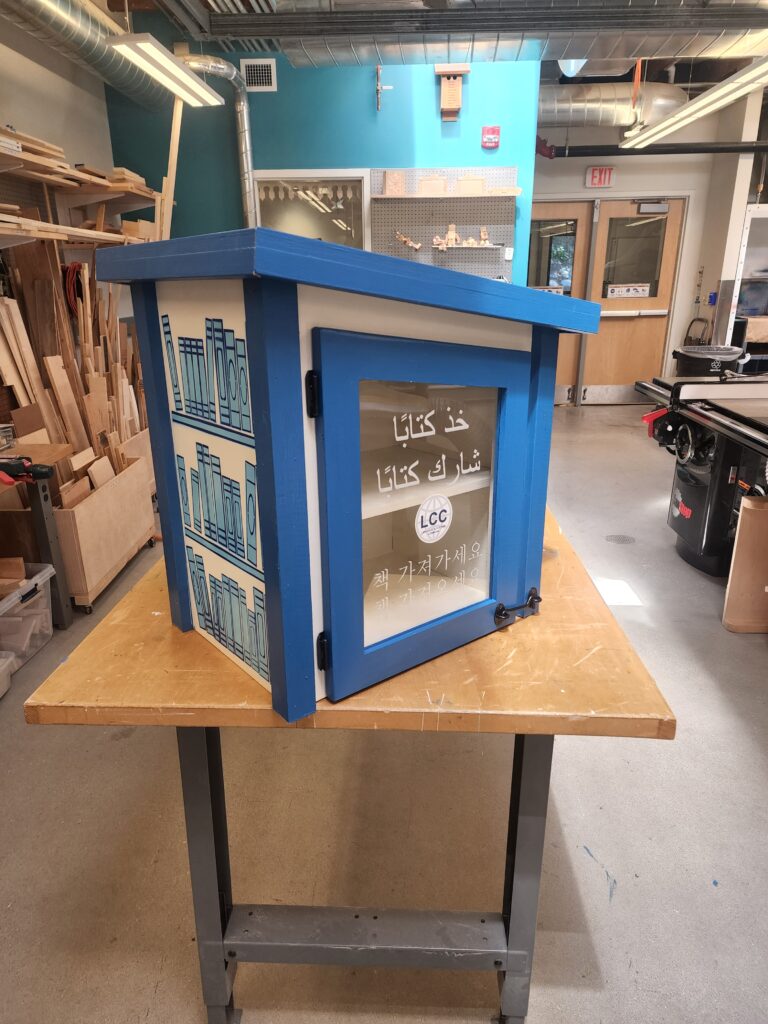

It seemed like we were getting close to installation, but I made our final to-do list for the summer, and well, it was a little more than I thought it would be. This list was essential to see what was left to do and to start checking off the boxes towards the finish line. Kris and I continued to work as much as we could and finally had them all checked off by mid-June. I then gave the go-ahead to the facilities folks to have the boxes put up. I couldn’t believe it was really going to happen. I had an idea of when they would be installed, but not exactly. So, you can imagine my delight as I came to campus one day and saw the first one right there by my building, just as I had envisioned it.
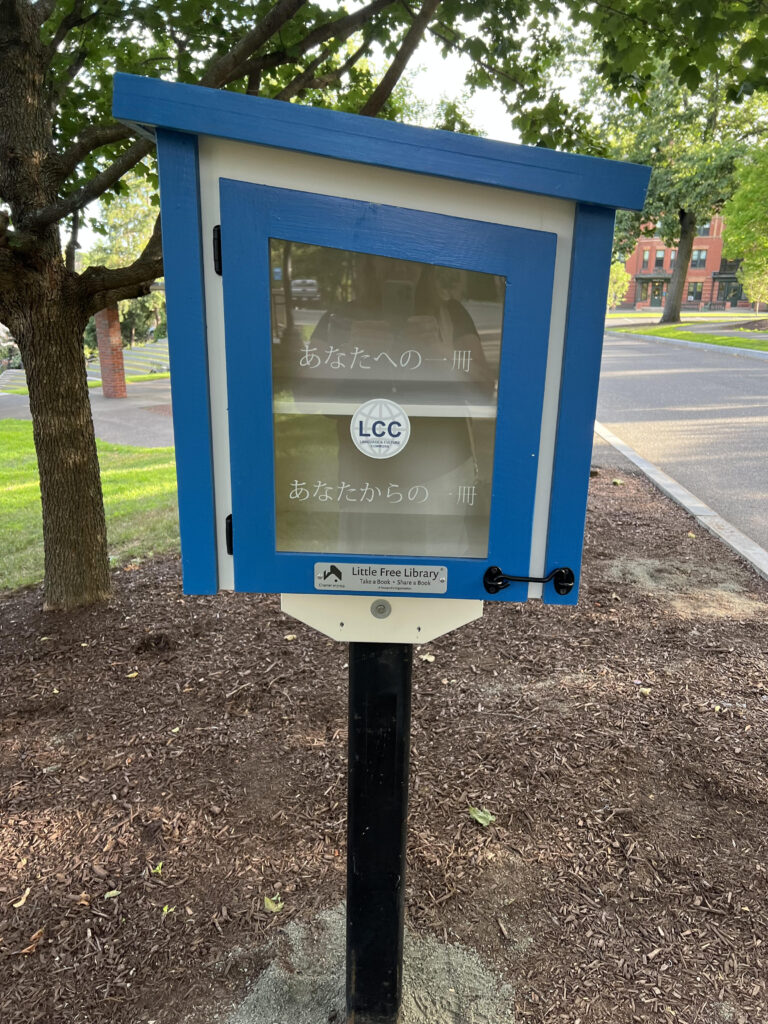
They were up! Before I could even get a sign, instructions, or the map installed, people started to put books in them. Many were in English, but that’s ok. They got the idea. We have a free cart at our library’s entrance, so that is where we take those books.
Now it was time to fill them! We already had a leisure collection of books in several languages in the LCC that no one was really using, so we repurposed those to the boxes. In general, the types of reading materials include classic novels, children’s books, non-fiction books, autobiographies, and more. Sometimes, we even place an occasional music CD. Then and now I ask for donations from faculty and buy some books from local book sales. It’s particularly helpful when a faculty member retires and leaves several books to go through. We always find some gems for our boxes.
It was a very satisfying and rewarding process as I personally filled them, book by book, language by language. As another staff member reflected on our project, “Most people find it difficult to learn a new language, but with the little libraries, I want to get people interested in learning. We hope these libraries also become a symbol of the inclusion present in the diverse student body at Mount Holyoke.” And indeed, they have.
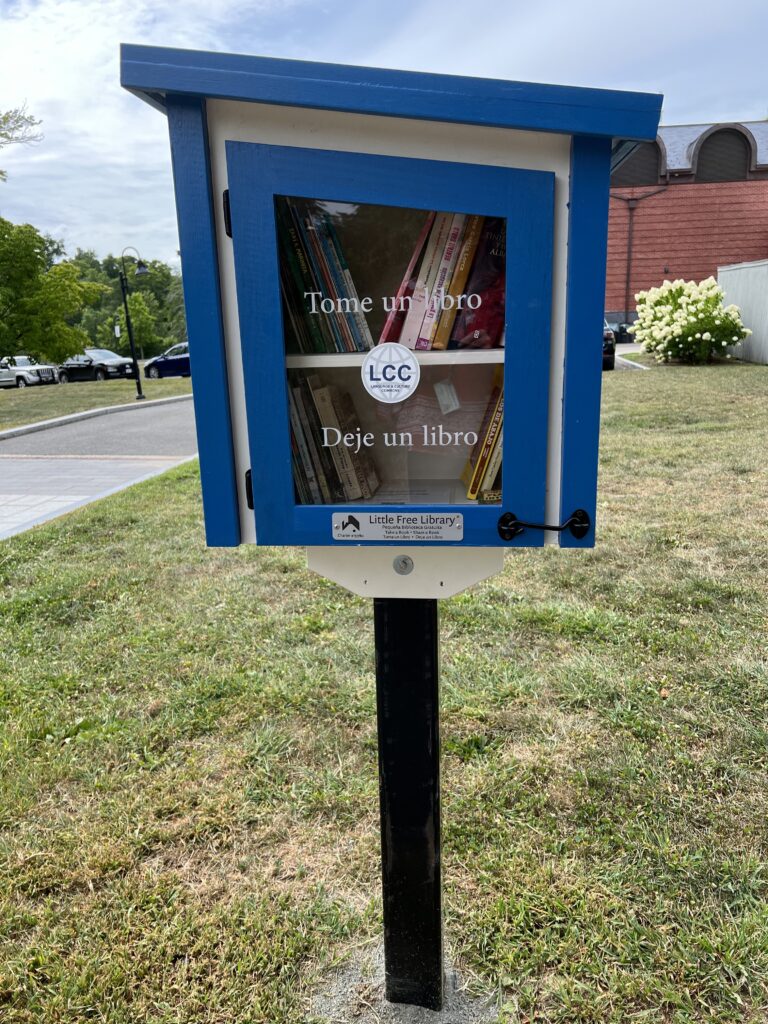
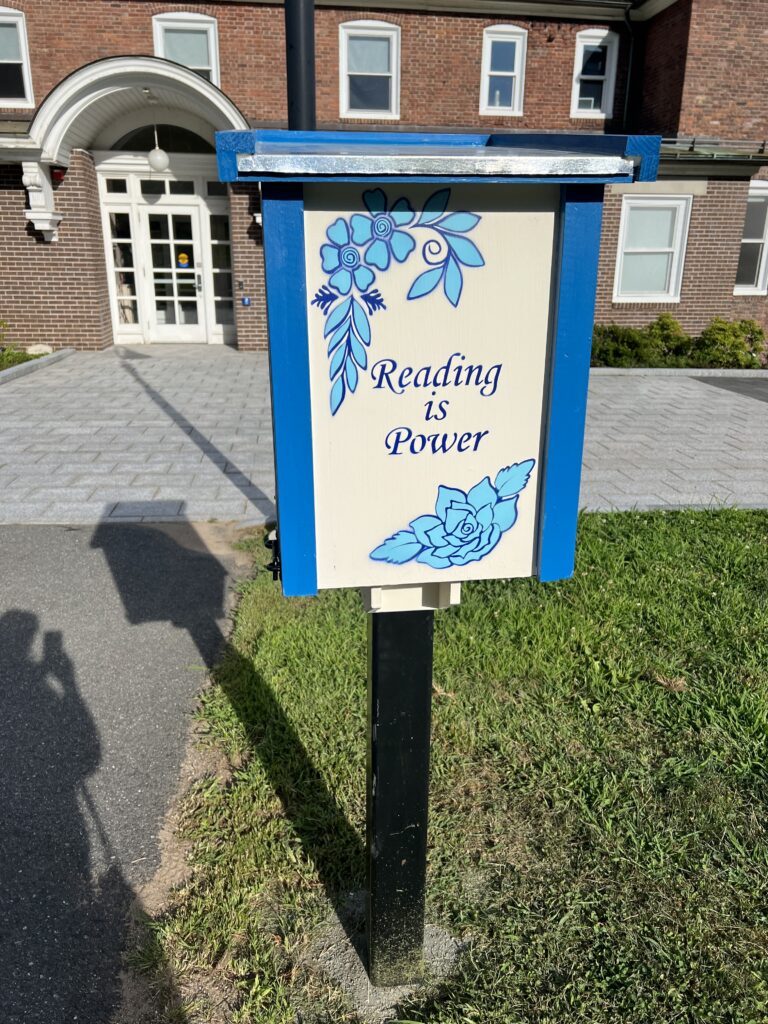
Fast forward 18 months – the boxes have been a success. It is a strong testimony of many people across campus coming together for a common goal. I have found it to be a very rewarding and satisfying journey. When one has an idea and can bring it to fruition, it is a great feeling. Being able to provide my student workers with a unique opportunity was also very fulfilling. I know from their comments that they really appreciated it and learned a lot. I have received much positive feedback about the project, which means we are reaching the community. The college published an article highlighting the process and collaboration of staff to bring it all together. Thankfully, we have been able to keep most boxes filled with the exception of a few languages. Recently, the library provided funds to purchase books in those languages, so I am looking forward to filling those again. It is great that the books are being taken. One of my student workers is responsible for maintaining the boxes and keeping inventory. She helped come up with the list of books we could purchase in the languages with missing books, but other staff members added to it also. We developed weekly and monthly checklists that keep us all on the same page so the boxes are taken care of, which you can access at the link. Perhaps in the future, we will add more libraries and languages. As of now, this project helped put the LCC on people’s radar and, more importantly, provided cultural material that was not so readily accessible. My hope is that they will reach others outside of our campus community as well. The promotion of these books from different cultures is a testament to our global commitment from our little rural town to the rest of the world. All in all, it was a collective learning experience with a happy ending. I can also say, as of now, no wasps have dared to enter! Or if they did, at least they could spend a little time reading!
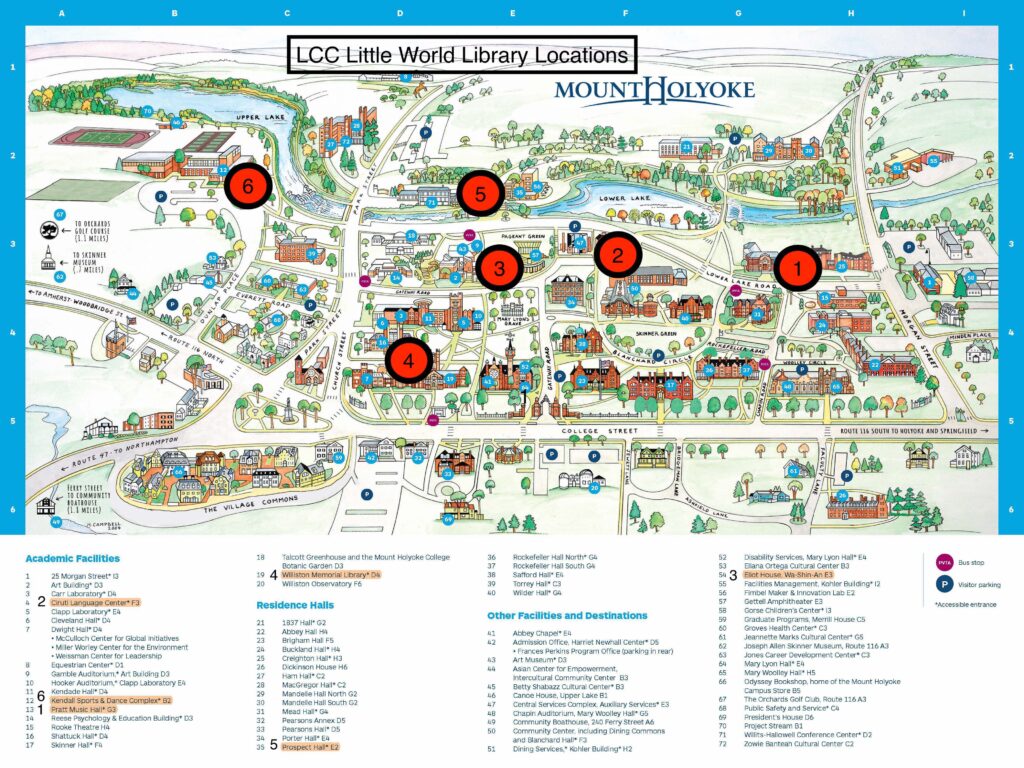


I was so happy to see the email update about this article. I loved hearing about this project at IALLT this summer and it’s nice to see this update. Awesome work, Jean.
Thanks, Amanda! Let me know if you need help getting these going on your campus someday!